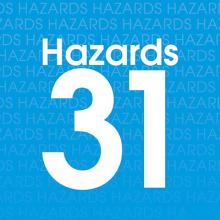
What the Processing Industry Must Learn from the Boeing 737 MAX Crashes
At first glance, it would appear that there is not much a processing facility can learn from an aviation disaster. In reality, however, there are many similarities between aviation safety and process safety, and therefore lessons learned in one of these industries are valuable to the other.
Both a commercial aircraft and an operating plant involve continuous, or extended, operation of sophisticated pieces of equipment with complex physical parts, control systems, programming, and human factors. Both are operated by trained and experienced personnel who are required to monitor a system for many hours at a time, yet are still required to respond within a manner of seconds to an abnormal situation. Both have the potential for highly hazardous scenarios to occur, and both rely on a variety of automatic and manual controls to prevent severe outcomes if something goes wrong. So, when a failure of any kind is identified in either industry, it is important to ask what the other industry can also learn from these incidents.
Catastrophic scenarios in the aviation and process industries almost always happen because of multiple failures in different stages of a project, and at many levels within each organization. The two Boeing 737 MAX crashes, which killed 346 people and caused all aircraft of this type worldwide to be grounded, were no different and involved failures at many levels within the process safety management system. After these incidents have happened, all we can do is search for and apply as many lessons as we can to prevent similar scenarios from occurring in the future.
It is not within the scope of this paper to cover every one of the myriad items that led to these events. Instead, it will focus on some key lessons to be learned from the set of circumstances which created the conditions that allowed these crashes to occur. In particular, it will discuss the following learnings:
- Pushing to meet financially-driven deadlines can jeopardize safety
- Undue focus on financial considerations can cause companies to hide or ignore important warning signs
- Critical instrumentation and equipment may need redundancy to meet required reliability
- It is dangerous to assume that someone who is familiar with a “similar” system will take the correct action every time in a high-pressure and high-stress situation
- If the design is significantly changed, the risk assessment must be revalidated
- Not fully understanding how a control system works can lead to unidentified risks
- If any safeguards are removed from the design, or discovered to be inoperable, the risk assessment is no longer valid and needs to be revalidated
- Every so-called “near-miss” is an opportunity to stop the full scenario from occurring in the future
Each one of these lessons is an activity or priority that, if heeded, can prevent future disastrous accidents from occurring. To that end, this paper will also discuss how process safety management approaches could have prevented these vulnerabilities, based on the Center for Chemical Process Safety’s risk based process safety management (RBPSM) system.
Want to read more ACM articles?
